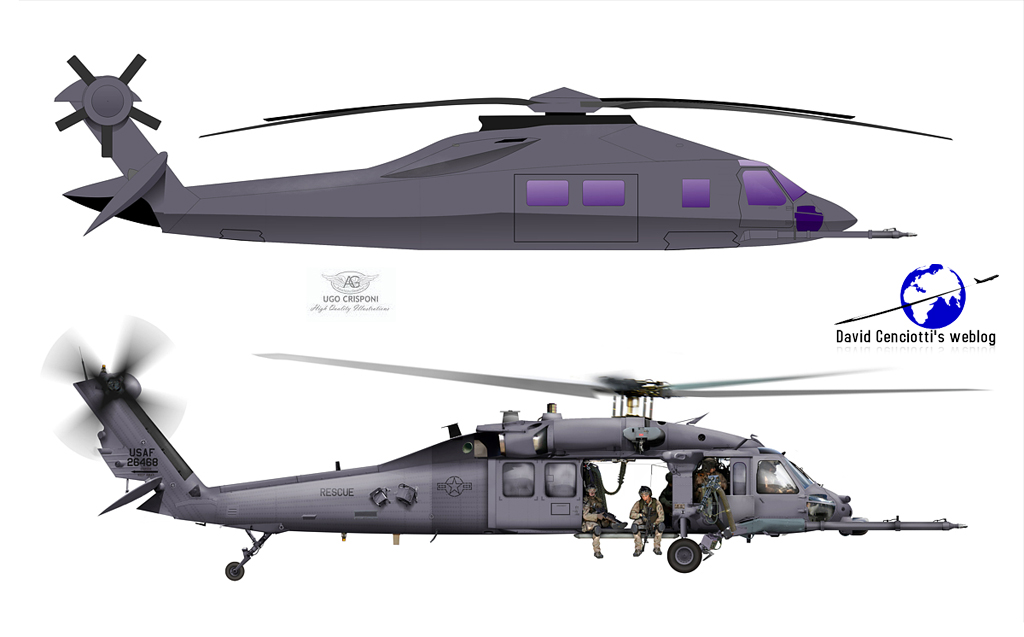Hi, only the tail rotor was recovered. However, it should still be interesting to dissect.
Could the bin Laden Raid Have Revealed a Secret New Helicopter? - Yahoo! News
Could the bin Laden Raid Have Revealed a Secret New Helicopter?
By MICHELLE TRAVIERSO Michelle Travierso – Wed May 4, 5:40 pm ET
A picture of the tail rotor of the chopper that the Navy Seals' Team Six detonated revealed unfamiliar features. Reports say it could be a new, secret helicopter.
When the Team Six members reached Osama bin Laden's compound in Abbottabad one of the choppers made a "controlled but hard landing," according to reports, probably due to higher than expected temperatures.
Temperatures affects the density of the air, and low density makes it harder for the rotor to sustain the weight of the chopper, especially if it was near its maximum weight (being packed with soldiers and fuel to fly in from Afghanistan). Abbottabad is about 1200 meters above the sea level, and altitude also affects air density. (Inside the Osama bin Laden Strike: How America Got Its Man.)
So what machine exactly experienced the hard landing described above? Short answer: we don't know for sure. Long answer: It seems that the tail rotor visible in the picture belongs to a highly modified version of the H-60, the chopper of choice of the special forces for more than 30 years. Aviation Week doesn't beat around the bush, claiming: "A previously undisclosed, classified stealth helicopter apparently was part of the U.S. task force that killed Osama bin Laden in Pakistan on May 1."
Stealth technology on helicopters is not itself new, but the fact that a previously unknown machine was used in this raid is yet another proof of the degree of importance that this mission had for U.S. commanders. (Watch President Obama's announcement of Osama bin Laden's death.)
Aviation Week then goes techie and explains what we can see from that picture: "Photos disseminated via the European PressPhoto agency and attributed to an anonymous stringer show that the helicopter’s tail features stealth-configured shapes on the boom and the tail rotor hub fairings, swept stabilizers and a 'dishpan' cover over a five-or-six-blade tail rotor. It has a silver-loaded infrared suppression finish similar to that seen on V-22s."
Low radar visibility was essential, for the Pakistani air force would have either scrambled its jets if an unknown threat to its airspace (and near the country's best military academy!) was detected, or fired its surface to air missiles. It's possibly more proof of the fact that Pakistan really knew nothing about the mission - or at least its first wave of attack - until it ended. (See pictures of Osama bin Laden.)
This would explain why the Seals wasted critically precious time to blew up the mysterious helicopter and why many experts had problems identifying its remains. It's unclear what Pakistan could have made of the downed chopper, but growing ties between Pakistani and Chinese armed forces could have made the destruction of such new machine a must. China and Pakistan, over the past two decades, have developed a multi role combat aircraft called JF-17 and an advanced trainer, the JL-8.
The Navy Seals usually fly in the famed Sikorsky UH-60, popularized by the movie Black Hawk Down, in which two UH-60 were shot down in Somalia, resulting in the death of 18 men.
Black Hawk Down was a scenario, insiders say, that together with first attempt to rescue the hostages held at the U.S. embassy in 1980 in Iran, that's been evoked constantly in the planning phases leading to the May 1 raid, as examples of potentially disastrous outcomes. (Via Aviation Week)
















